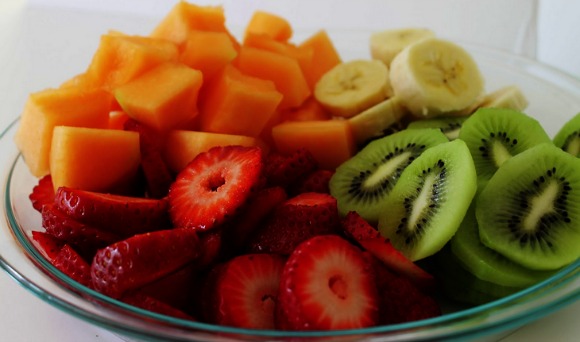CRB Tech reviews is going to share with you, some easy, effective and healthy methods to store cut fruits. Summer season is just round the corner, and in most houses, the consumption of fruits increases, so the need for its storage.
Guess what?
The ways we are going to discuss over here, are not just effective, but cheaper as well.
As mentioned above, summer is here as are an assortment of lip-smacking fruits. Tragically, hypersensitivities are synonymous to the hot climate and cut fruits are notoriously well known for fueling them. So what we do? While an apple or a kiwi can be eaten all in one go, what do we do with the bigger ones like papaya, watermelons? that is the question We came across various articles from nutritionists and got some answers on how to store cut fruits in summer :
Works for up to 6 hours.
Works for 3-4 hours.
Works for a duration of 3-4 hours.
Works for 10-12 hours.
A few more tips include.....
A few of the fruits and vegetables release a gas called ethylene as they ripen. This gas can prematurely ripen foods that are delicate in nature, so keep ethylene-creating foods far from ethylene-sensitive sustenances. Avocados, bananas, melons, kiwis, mangoes, nectarines, plums, pears and tomatoes, for instance, ought to be put away in a better place than your broccoli, apples, leafy green vegetables, carrots and watermelon. Get a more drawn out rundown of fruits to store independently here.
Citrus fruits, e.g. oranges, lemons, tangerines and limes, will do fine for up to seven days in a cool, dim place, far from direct light of the sun, yet you can stretch their lives by putting them away in the ice chest in a punctured plastic bag.
There's nothing more regrettable than stacking up amid your weekly trip to the farmers market and after that overlooking every one of your goodies, just to discover them moping flaccidly in your crisper drawer days as the time passes. To keep the buy fresher for more time, you can try out these tips.
The ways we are going to discuss over here, are not just effective, but cheaper as well.
As mentioned above, summer is here as are an assortment of lip-smacking fruits. Tragically, hypersensitivities are synonymous to the hot climate and cut fruits are notoriously well known for fueling them. So what we do? While an apple or a kiwi can be eaten all in one go, what do we do with the bigger ones like papaya, watermelons? that is the question We came across various articles from nutritionists and got some answers on how to store cut fruits in summer :
1. Make use of lemon juice:
Lemon juice hinders the oxidation of the fruit which averts sautéing and in addition loss of freshness. One lemon can give enough squeeze to a 1.5 quart bowl of cut fruits. One needs to simply squeeze it on the cut fruits and spread the juice without wounding it. The most ideal way for effective results is keep the fruits apart. Fruits like kiwis don't require a lot of lemon squeeze as the fruits itself conveys a ton of citrus acid. Subsequent to adding lemon squeeze, the fruits ought to be put away in the refrigerator.Works for up to 6 hours.
2. Cold water:
Dip the fruits in cold water containing ice, and keep it that way for a duration of 3-4 hours.Works for 3-4 hours.
3. Plastic covers:
On the off chance that you don't like the first thought, thinking of it may influence the first flavor, you can store your cut fruits in bowls with plastic covers or aluminum foil. Ensure you jab a couple of openings into it. Covering is essential principally to shield your fruits from getting different odours inside the ice chest of the fridge and the gaps allow the fruits to breathe in. Nonetheless, this is not a proven technique. There is still a little chance of oxidation due to its contact to external air.Works for a duration of 3-4 hours.
4. Citric acid:
Other than lemon juice, you can likewise utilize the powdered type of citrus extract. It doesn't hamper the taste of the fruits very much, and makes them last for long.Works for 10-12 hours.
A few more tips include.....
A few of the fruits and vegetables release a gas called ethylene as they ripen. This gas can prematurely ripen foods that are delicate in nature, so keep ethylene-creating foods far from ethylene-sensitive sustenances. Avocados, bananas, melons, kiwis, mangoes, nectarines, plums, pears and tomatoes, for instance, ought to be put away in a better place than your broccoli, apples, leafy green vegetables, carrots and watermelon. Get a more drawn out rundown of fruits to store independently here.
Citrus fruits, e.g. oranges, lemons, tangerines and limes, will do fine for up to seven days in a cool, dim place, far from direct light of the sun, yet you can stretch their lives by putting them away in the ice chest in a punctured plastic bag.
There's nothing more regrettable than stacking up amid your weekly trip to the farmers market and after that overlooking every one of your goodies, just to discover them moping flaccidly in your crisper drawer days as the time passes. To keep the buy fresher for more time, you can try out these tips.


0 Komentar untuk "4 Effective Methods To Store Cut Fruits "